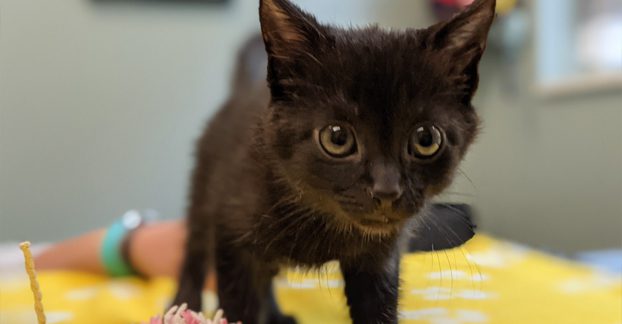Collecting a Urine Sample from a Cat

Most cats are very uncomfortable with a container being slipped underneath them when they are in their litter box, so it is a bit of a challenge to obtain a clean urine sample from a cat. To aid you in this adventure, we have put together some suggestions to help make the process easier for you. Because all cats are different in their litter box preference, you may need to try more than one of the following suggestions or a combination of a couple of them to find your cat’s preference. Please feel free to contact us at any point with questions.
Plasti litter (black beads)
The first recommendation is to completely clean out the litter box (washing thoroughly with soap & water to remove any dust), then place the NoSorb beads in place of your regular litter. No-sorb beads are designed to not absorb the urine. After the cat urinates, the beads and urine can be put back into the collection container and brought to the hospital.
KitKat Litter (sand like)
Because cats are sometimes texture driven, there is a hydrophobic sand that can be placed in the litter box. To use completely clean out the litter box, then pour the sand in. When the cat urinates in the sand, use a pipette to pull the sample and then place it into container to bring to the hospital.
Your Home Litter
Another method that may be preferential to your cat is to place a piece of plastic sheeting over the existing litter. This can be done with a couple of layers of saran wrap or by placing the entire litter box in a plastic garbage bag. Make sure the plastic lays flat against the litter. The cat will feel the litter under their feet and use the box as they normally would. You can then retrieve the urine sample with the syringe provided.
Frozen Peas
If you have a bag of frozen peas at home, you can wash out the litter box well and then put in the frozen peas. Many cats will mind the cold, but others will not. If they urinate in the frozen peas, pour the urine sample into a clean container and bring to clinic within a few hours.
If your cat is uncooperative in any of the above methods, we can help by setting up an appointment for a cystocentesis. Cystocentesis is done by passing a needle into the bladder and obtaining a sample directly. Although this sounds unpleasant, it is surprising how well cats tolerate the procedure. It is important to keep your cat away from their litter box for at least two hours prior to this appointment.
After obtaining the sample, it is extremely important to get the sample to us in a reasonable amount of time. For best results, the sample should be processed within 2 hours after collection. If that is not possible, the sample should be refrigerated and tested within 8 hours.
About Us
The Healing Paws Veterinary Care promise is a thorough and kind experience. Taking the time to listen to you (and your pet) while being thorough in our examination, pain assessment and diagnostic testing means that we can find answers and solutions that keep your friend living longer and more comfortably.
